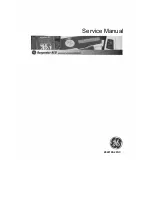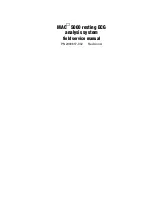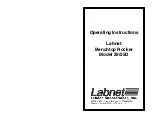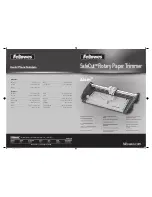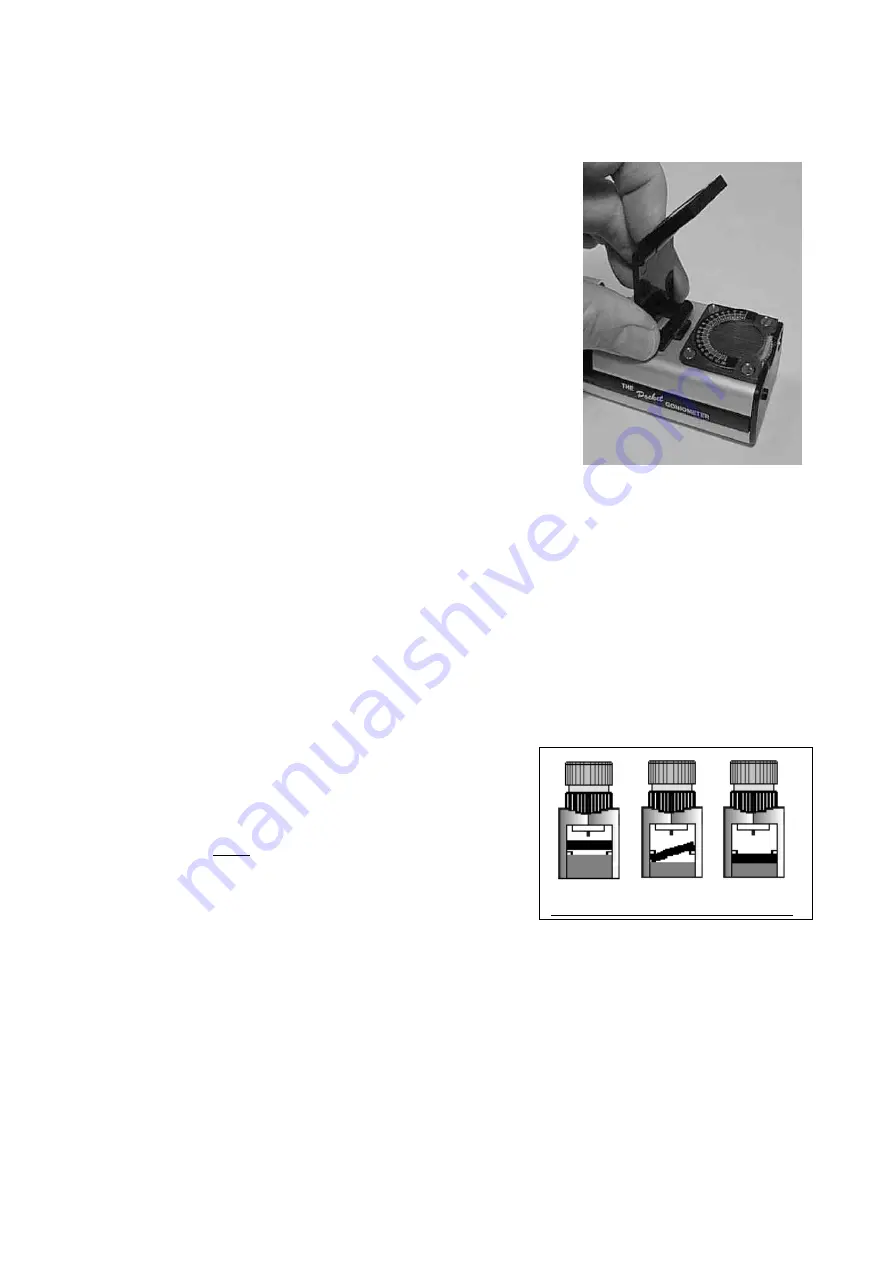
4
2. Setting up the PocketGoniometer
2.1 Activating the PocketGoniometer
Push the light button located next to the dispenser compartment
at the short end of the instrument to switch on the light.
An integrated timer inside the instrument will switch off the
light source automatically after about ten minutes to save
battery power. The light can be switched on for another ten
minutes by pressing the light button again even if the light has
not yet been switched off.
2.1.1 Mounting the eyepiece
It is possible to increase the accuracy of the readings with the
integral eyepiece offering additional 7x magnification (Figure
2.1). Push the eyepiece foot under the bezel to mount it onto the
instrument.
2.1.2 Remove the specimen stage
The specimen stage accepts specimen strips of up to 2.5 mm
thickness. Thicker specimens up to 12 mm can be tested if the
specimen stage is removed in the following way:
a) Remove the two screws accessible through the holes at the bottom of the instrument.
b) Turn the instrument over and remove the specimen stage.
c) Add a spacer of suitable thickness to support the specimen at the proper height.
PLEASE NOTE! The “point of reflection” should appear at the horizontal baseline.
2.2 Loading a Specimen
Prepare your sample as described in Section 5.
Push on top of the two specimen clamps and slide the strip
into position on top of the specimen stage. When the
specimen clamps are released the specimen strip should be
firmly held under the four clamping fingers. Soft materials
can be attached to the carrier strip with a special pre-cut
adhesive tape, which can be used for several specimens
before replacement (Appendix A).
NO! NO! YES!
Insert specimen under clamping fingers!
Fig. 2.1 Removable eyepiece




















